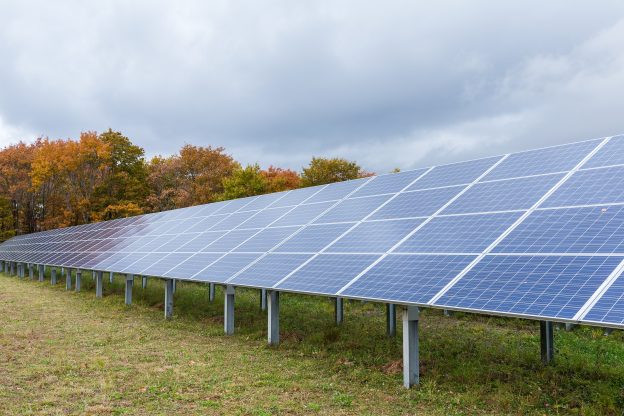Historical Review: In the Photovoltaic Industry, Joy Comes with Material Price Increases, and Sorrow with Decreases.
"The last silicon material bull market began in 2004 and ended in 2008, with the price of silicon material peaking at over 3,000 RMB per kilogram in 2008. It then fell continuously for 12 years, reaching a low of 57 RMB per kilogram in May 2020. During the last silicon material boom, Shi Zhengrong, the controlling shareholder of Suntech Holdings, became China's richest man in 2006, and Peng Xiaofeng, the controlling shareholder of LDK, became the richest man in China's new energy sector in 2007. At that time, due to the lack of materials, battery and module companies were desperate to secure silicon materials and wafers, leading them to sign long-term contracts with silicon material and wafer companies that locked in both volume and price (akin to selling their future output). In 2006, Suntech Power signed a ten-year polysilicon long-term contract with fixed prices from the American company MEMC. According to this contract, Suntech Power could purchase polysilicon at $80 per kilogram, while the retail price of polysilicon in the market was over $150 per kilogram at the time. However, after entering October 2008, the price of polysilicon plummeted, dropping to just $35 per kilogram by the end of 2011. Suntech Power had to terminate the long-term contract and paid $212 million in compensation to MEMC. Suntech Power also attempted to reduce its dependence on silicon materials by developing amorphous silicon thin-film batteries, investing $300 million to build a production line in 2007. However, the financial crisis of 2008 led to a sharp decline in the prices of both crystalline and amorphous silicon batteries, rendering the project uncompetitive, and it had to cease production. The combination of the financial crisis and Suntech's investment mistakes ultimately led to the bankruptcy reorganization of Wuxi Suntech on March 20, 2013.
Following Wuxi Suntech was Jiangxi LDK, the former silicon wafer leader, whose bankruptcy reorganization was also a result of failed silicon material investments. The Mahong silicon material factory invested by LDK had a planned capacity of 15,000 tons, and it is said that the investment amounted to 30 billion RMB. During the construction phase, LDK abandoned the approach of using domestic equipment and opted for all imported equipment, with even the installation and commissioning of the equipment being carried out by an American company, resulting in a huge investment. Consequently, the production cost of silicon materials was much higher than that of Jiangsu Zhongneng. The failure of silicon material investment directly led to the bankruptcy reorganization of Jiangxi LDK, following Wuxi Suntech, in 2015.
Yingli, a photovoltaic giant, was also dragged down by the SixNine Silicon Industry, and due to poor management, entered judicial reorganization in 2020. Yingli was the company with the most photovoltaic module shipments globally between 2012 and 2013. However, due to continuous losses and high debt, a debt crisis erupted in 2015, and it entered a debt restructuring phase. By 2018, it was delisted from the New York Stock Exchange. Even the battery industry leader, Suntech, had to sign a 'contract of servitude' to obtain silicon wafers, and other battery and component companies did the same to secure silicon wafers. For example, Linyang signed a long-term silicon wafer contract with LDK. In August 2010, when Lu Zong, the controlling shareholder of Linyang, saw that the situation was not right, he sold Linyang to the South Korean Hanwha Group for $387 million, thus escaping the predicament. However, Hanwha did not recognize the long-term silicon wafer contract signed between Linyang and LDK, leading to mutual lawsuits. The editor was also affected by this incident and ended up with a lawsuit. There are countless other photovoltaic companies that went bankrupt due to the collapse of silicon material prices, and it is impossible to list them all. Speaking of the silicon material segment, as of June 2009, there were nearly 50 silicon material companies in China that were building, expanding, and preparing to build polysilicon production lines. Now, only a few silicon material companies remain, and the current survivors include Yongxiang Shares, Jiangsu Zhongneng, Xinjiang Daqo, Xinte Energy, Dongfang Hope, and Asia Silicon, among others. Although a new batch of players has emerged this year, it remains to be seen whether they can be the last ones standing."
Which Companies Could Trigger a 'Dike Burst' in Silicon Material Prices?
- Companies with high turnover and low inventory will actively trigger a 'dike burst' of high-priced silicon material;
- Silicon material companies facing financial stress will trigger a 'dike burst' of high-priced silicon material. It is said that silicon material companies have started to build up inventories. Indeed, with the current price of silicon material, one month of production and sales can create three months' worth of inventory. However, not all seasoned silicon material players are monolithic; companies like , Daqo, Xintec, and Orient Hope are financially stable and can continuously build up inventories. But some silicon material companies are short of cash, and those strapped for cash will not build up inventories. It is unlikely that companies like Tongwei, Daqo, Xintec, and Orient Hope will foolishly keep propping up prices indefinitely.
- The day new players in the silicon material market start production may be the day when silicon material prices plummet. The high profits of silicon material in 2021 have attracted a large number of new players, such as Qinghai Lihao, Xinjiang Jinnuo, Jiangsu Runyang, and Baofeng Energy. The day these new players begin production could be when silicon material prices sharply decline, because at that point, the established silicon material companies will inevitably clear their inventories. As the group that has benefited from the current situation, why should they continue to collectively support the new players who want to share in the profits?
In summary, while history may not repeat itself, it often rhymes. When the tide recedes, a group of photovoltaic companies that were swimming naked will be revealed on the beach."







